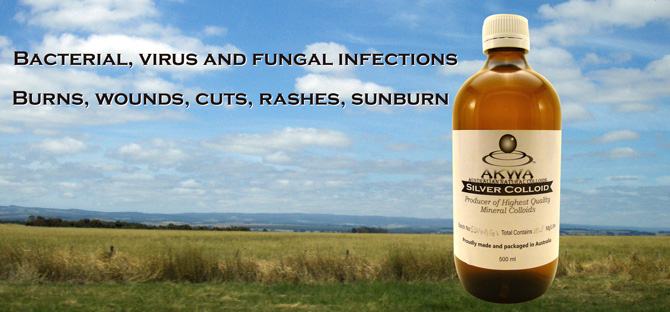The use of elemental silver as an anti bacterial agent is nearly as old as mankind itself. Its amazing properties are probably the basis for the large monetary value that has been placed on a mineral that was comparatively easy for early man to locate, mine and smelt. Throughout history, documentation points to uses of the metal to fight or retard the growth of single celled organisms. The Egyptians mention it in their writings, the Roman Empire stored wine in silver urns to prevent spoilage, and the Chinese emperor’s and their courts ate with silver chopsticks. Aristotle advised Alexander the Great to boil water and store in silver vessels to prevent waterborne diseases. Vikings would line the hull their ships with strings of silver and copper for the same purpose. American settlers put silver dollars in milk to stop it spoiling and the use of silver leaf to combat infection in wounds sustained by troops during WW1 is well known and detailed.
In fact the use of silver as an antibacterial substance was becoming almost universal in America, in the earlier part of the 1900's. During the 1930’s, synthetically manufactured drugs began to make an appearance and the profits, together with the simplicities of manufacturing this new source of treatment were not to be overlooked. Silver quickly lost its status. Unfortunately as drug companies become larger, the knowledge that has been amassed over the ages in regard to silver, and many other forms of traditional healing for that matter is lost.
The return of silver to conventional medicine began in the 1970’s. The late Dr. Carl Moyer, chairman of Washington University’s Department of Surgery, received a grant to develop better methods of treatment for burn victims. Dr. Margraf, as the chief biochemist, worked with Dr. Moyer and other surgeons to find an antiseptic strong enough, yet safe to use over large areas of the body. Dr. Margraf reviewed 22 antiseptic compounds and found drawbacks in all of them. “Mercury, for example, is an excellent antiseptic but toxic,” he comments. “Popular antiseptics…can be used over small areas only.” Furthermore, disease organisms can become resistant to antibiotics, triggering a dangerous super-infection. “These compounds are also ineffective against a number of harmful bacteria, including the biggest killer in burn cases – a greenish-blue bacterium called Pseudomonas aeruginosa. It almost always shows up in burns, releasing a poison.”
Reviewing earlier medical literature, Dr. Margraf found continual references to the use of silver. Based on the knowledge he had amassed, Dr. Margraf decided to use the best known compound of silver; silver nitrate. Concentrated silver nitrate is both corrosive and painful. To circumvent this he diluted the silver nitrate to a .5 percent solution and found that it killed the Pseudomonas aeruginosa bacteria and permitted wounds to heal. Importantly resistant strains did not appear. Good as it was, silver nitrate was unfortunately, far from ideal. It disturbed the balance of body salts, was thick, awkward to use and stained everything it touched.
Dr. Magraf continued his research and looked for more suitable silver preparations to utilise. As a result of these efforts, hundreds of important new medical uses for silver were found.
Silver sulphadiazine (FDA approved Silvadiene, Marion Laboratories) is used in 70 percent of burn centres in America. Discovered by Dr. Charles Fox of Columbia University, sulphadiazine has also been successful in treating cholera, malaria and syphilis. It also stops the herpes virus, which is responsible for cold sores, shingles and worse.
Medical journal reports from the early 1900’s demonstrated a properly prepared colloidal dispersion of silver was the only form of silver solution that was completely suitable with no adverse side effects. For example T. H. Anderson Wells reported in the Lancet (February 16th, 1918) that a preparation of colloidal silver was “used intravenously in a case of puerperal septicemia without any irritation of the kidneys and with no pigmentation of the skin.” There were still sceptics. Some of the negative reaction that colloidal silver received in the early 1900’s was due to a supply of improperly prepared and unstable colloid. Shortly after however, the colloidal nature of body fluids including blood was understood. This new knowledge of body chemistry gave rise to the enormous array of applications for colloidal disinfectants and medicines.
In laboratory tests with colloidal silver, bacteria, viruses, and fungal organisms are killed within minutes of contact. Larry C. Ford, M.D. of the Department of Obstetrics and Gynecology, UCLA School of Medicine, Centre For The Health Sciences reported in a letter dated November 1, 1988, “ I tested them (the silver solutions) using standard antimicrobial tests for disinfectants. The silver solutions were antibacterial for concentrations of 105 organisms per ml of Streptococcus Pyogenes, Staphylococcus Aureus, Neisseria Gonorrhea, Gardnerella Vaginalis, Salmonella Typhi and other enteric pathogens and fungicidal for Candida Albicans, Candida Globata and M. Furfur.”
Each batch is electrolytically made of deionised water and high purity mineral without artificial stabilisers or coloring. No proteins, compounds mineral powder or mineral salts are used in our colloid products.
Akwa does hope that it will provide you with enough information. It does not in any way purport to give medical advice or recommendations.

